Amphibians are those vertebrates with a damp skin that have to return to water to lay their eggs: animals like frogs, toads and newts.
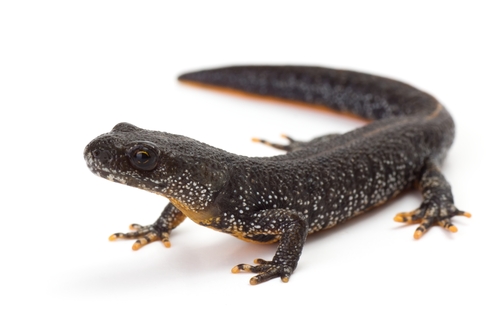
Some amphibians, like this newt, spend most of their lives in aquatic habitats, like a pond, but many members of the group live in damp places (like ditches and swamps) and have to travel to a pond or lake to lay their eggs. This is a dangerous journey, and many die along the way, eaten by predators, like herons and otters, or squashed as they cross a road.
Once at the pond, the adults have a noisy mating process, with lots of croaking. The mass of eggs that frogs lay is called frogspawn, and contains 3,000-4,000 eggs. Toads and newts tend to lay their eggs in a string, rather than a mass.
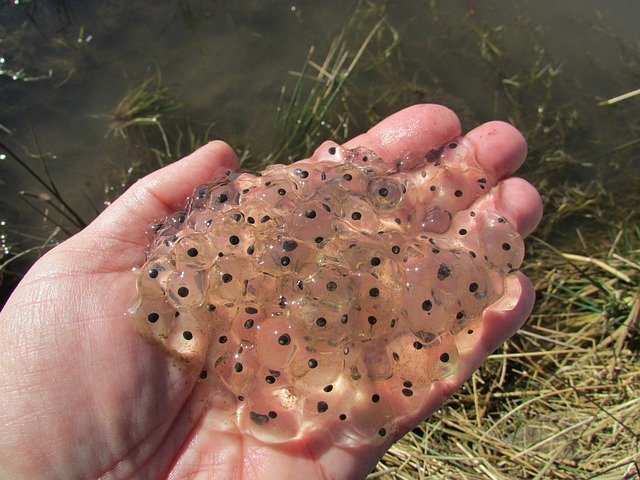
After 2-3 weeks, the eggs hatch and tiny black tadpoles swim off into the water. Over the next 3-4 months, the tadpoles will grow through several stages, growing as they feed on algae, which is green plant material that is found all over the pond. Many will be eaten by small predators in the pond: animals like sticklebacks (fish), dragonfly nymphs, water boatmen, etc..
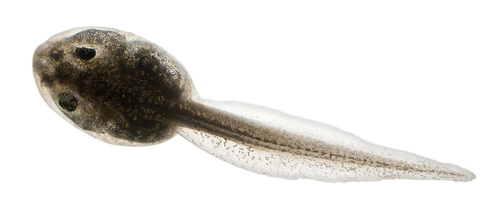
After hatching, the first change the tadpoles experience is the appearance of their hind legs.
Next, their front legs appear.
Finally, their tail disappears and they change shape to become tiny froglets.
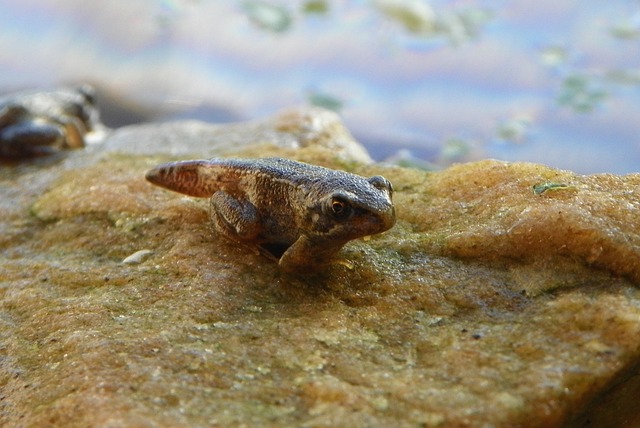
Amphibians are examples of animals that go through a total change in shape during their life cycle (egg -> tadpole -> froglet -> adult frog) - this complete change in shape is called metamorphosis (pronounced met - a - more - fo - sis).
The little froglets leave the pond in their thousands in the early summer. Most of them will be killed before they become adults; in fact, of those thousands of eggs in the frogspawn, only 2-3 will make it to grow into mating adults.
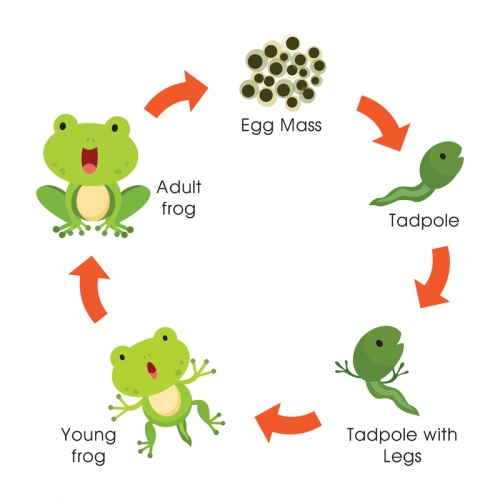
So, that's the basics of the amphibian's life cycle. Time to test out how much you know about their lives!







